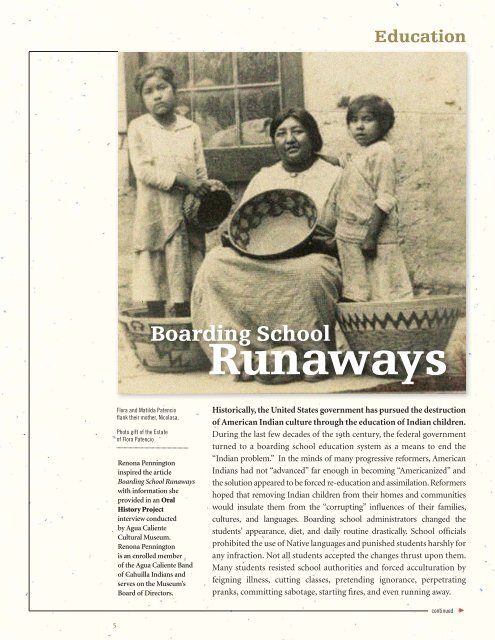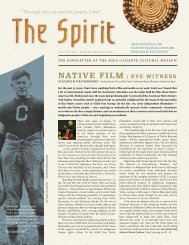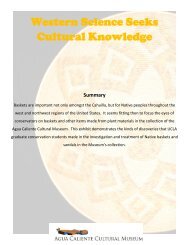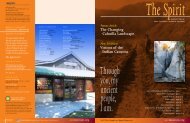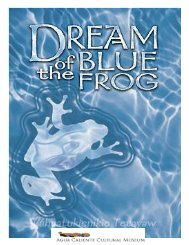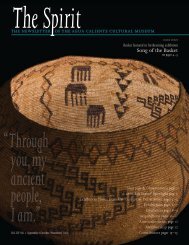accm newsletter2_20pg_FINAL.indd - Accarchives.org
accm newsletter2_20pg_FINAL.indd - Accarchives.org
accm newsletter2_20pg_FINAL.indd - Accarchives.org
- No tags were found...
You also want an ePaper? Increase the reach of your titles
YUMPU automatically turns print PDFs into web optimized ePapers that Google loves.
EducationBoarding SchoolRunaways5Flora and Matilda Patenciofl ank their mother, Nicolasa.Photo gift of the Estateof Flora PatencioRenona Penningtoninspired the articleBoarding School Runawayswith information sheprovided in an OralHistory Projectinterview conductedby Agua CalienteCultural Museum.Renona Penningtonis an enrolled memberof the Agua Caliente Bandof Cahuilla Indians andserves on the Museum’sBoard of Directors.Historically, the United States government has pursued the destructionof American Indian culture through the education of Indian children.During the last few decades of the 19th century, the federal governmentturned to a boarding school education system as a means to end the“Indian problem.” In the minds of many progressive reformers, AmericanIndians had not “advanced” far enough in becoming “Americanized” andthe solution appeared to be forced re-education and assimilation. Reformershoped that removing Indian children from their homes and communitieswould insulate them from the “corrupting” influences of their families,cultures, and languages. Boarding school administrators changed thestudents’ appearance, diet, and daily routine drastically. School officialsprohibited the use of Native languages and punished students harshly forany infraction. Not all students accepted the changes thrust upon them.Many students resisted school authorities and forced acculturation byfeigning illness, cutting classes, pretending ignorance, perpetratingpranks, committing sabotage, starting fires, and even running away.continued †


